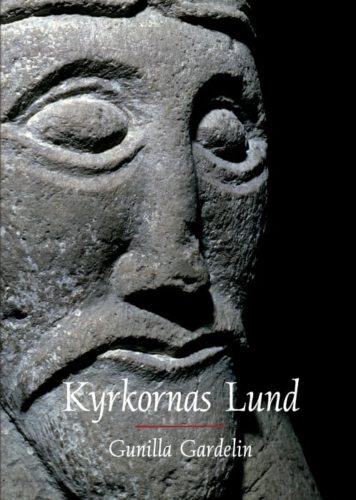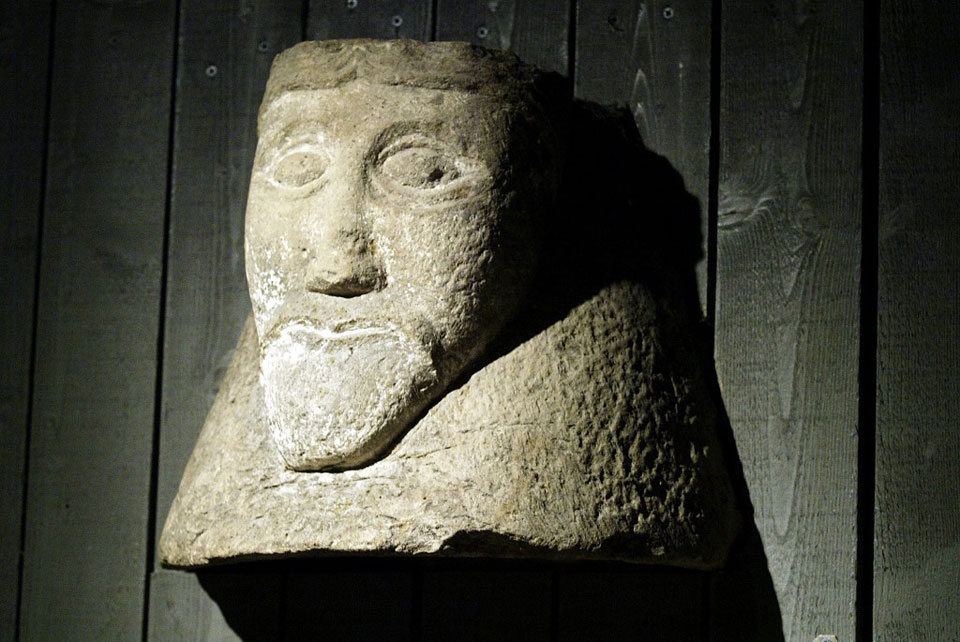Sveyn Forkbeard was perhaps buried in Lund in Scania, where what is left of his church can be seen
In the second half of the 10th century a new technology – the horizontal loom – (documented from archaeological excavations in Haithabu in Southern Denmark) made it possible to weave cloth for sails in a much more time-efficient way. This is probably one of the preconditions for the renewed Viking-attacks on England post 980, which the Anglo-Saxon chronicle tells about.
One of the more significant raids was undertaken in 991 by the Danish king, Sweyn Forkbeard, son of Harold Bluetooth. The chronicle tells that “This year Ipswich was plundered; and very soon afterwards Alderman Britnoth was slain at Maidon. In this same year it was resolved that tribute should be given, for the first time, to the Danes, for the great terror they occasioned by the sea-coast. That was first 10,000 pounds. The first who advised this measure was Archbishop Siric.”
As is well known, this tribute – danegeld – continued to be levied in the next 22 years until Swein together with his young son Cnutr sailed to Sandwich and finally conquered England. After which he soon died. In the “Encomium Emmae Regina” (pp. 15 -19) we are told the story in detail of how Svein “committed the royal scepter to” Cnutr and further asked of him “that if he should ever return to the land of his birth, he should carry back with him the body of his father, and should not let him be buried a stranger in a foreign land; for he knew that he was hateful to those people owing to the invasion of the kingdom.”
A little later, we learn this was indeed done, when “a certain English Lady” took his body, embalmed it, covered it with palls and brought it to sea, where “she had prepared a ship. Finally she sent messengers to Cnutr and his brother in Denmark “in order that they may hasten to receive it. They came gladly, and received the body with honour, and with yet more honour placed it in the monastery, which the same king had built in honour of the Holy Trinity, in the sepulchre, which he had prepared for himself.”
 But where was this grave? In the aftermath the myth was spread that Sweyn had been buried in a church erected by his father, Harold Bluetooth in Roskilde. However, in the 1980’s the first church in Lund in Scania, The Holy Trinity, was excavated. Below the remains of the later stone-church from AD1020-30, the remains of a wooden church were found. These could be dendrochronologically dated to AD 990. Here in the centre of the church an empty grave was found in front of the altar. It is highly likely that the body of Sveyn was buried there before being translated to the new stone church built on top of its wooden predecessor between 1020-30, where he was laid to rest in the vault beneath the altar. It is believed that the Cathedral of Winchester inspired this church in its architecture and liturgical layout. Perhaps the Church of the Holy Trinity, also called the church of the Savior or King’s was planned to be the future royal sepulchre. In the end, of course Cnutr, was buried in the Old Minster in Winchester.
But where was this grave? In the aftermath the myth was spread that Sweyn had been buried in a church erected by his father, Harold Bluetooth in Roskilde. However, in the 1980’s the first church in Lund in Scania, The Holy Trinity, was excavated. Below the remains of the later stone-church from AD1020-30, the remains of a wooden church were found. These could be dendrochronologically dated to AD 990. Here in the centre of the church an empty grave was found in front of the altar. It is highly likely that the body of Sveyn was buried there before being translated to the new stone church built on top of its wooden predecessor between 1020-30, where he was laid to rest in the vault beneath the altar. It is believed that the Cathedral of Winchester inspired this church in its architecture and liturgical layout. Perhaps the Church of the Holy Trinity, also called the church of the Savior or King’s was planned to be the future royal sepulchre. In the end, of course Cnutr, was buried in the Old Minster in Winchester.
After the extensive digging had resulted in uncovering the remains of the first church in present day Sweden, it was decided to preserve it beneath the modern building, which was the occasion for the extensive archaeological excavation. Sine 2006 it has been possible to visit the site, which lies today beneath a café.
SOURCE:
Encomium Emmae Reginae
Ed by Alistair Campbell with a supplementary introduction by Simon Keynes
Cambridge University Press (1949) 1997.
READ MORE:
Trinitatiskyrkan i Lund – med engelsk prägel ( The Church of Trinity – with English Character)
Maria Cinthio
In: Hikuin 24, 1997 pp. 113 – 134.
 Kyrkornas Lund
Kyrkornas Lund
By Gunilla Gardelin
Series: Archaeologica Lundensia
Kulturen 2015
FEATURED PHOTO:
Man from Drottens Kyrke/St. Salavator in Lund © Elin Kudo

